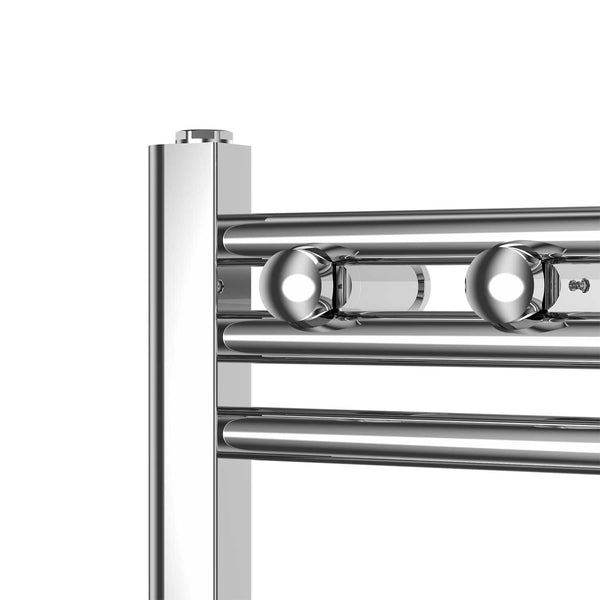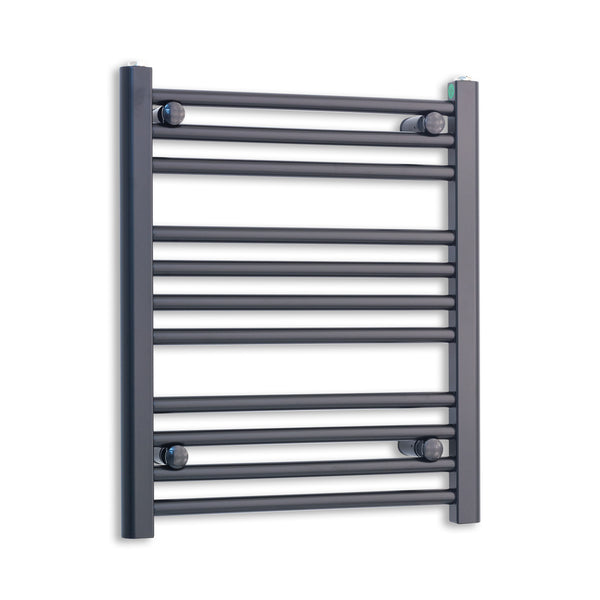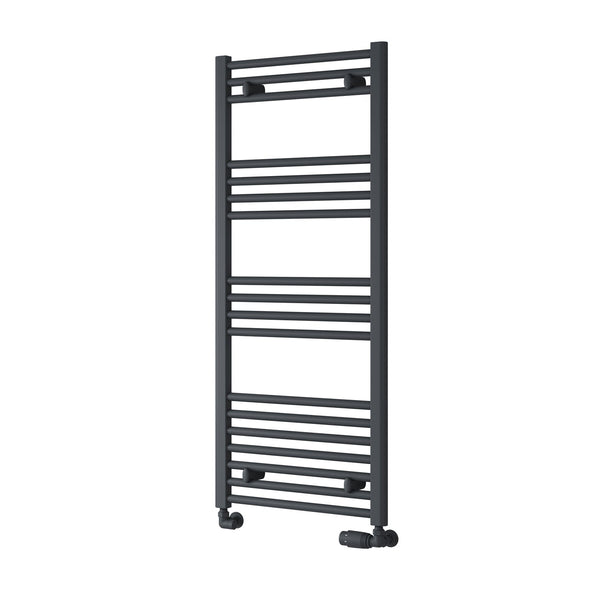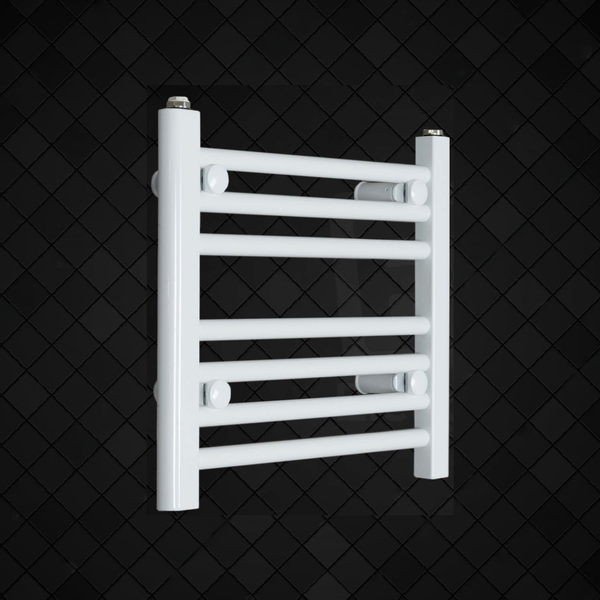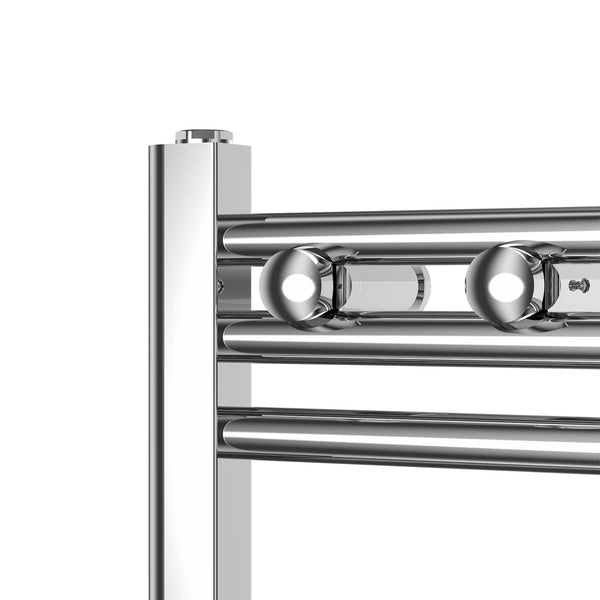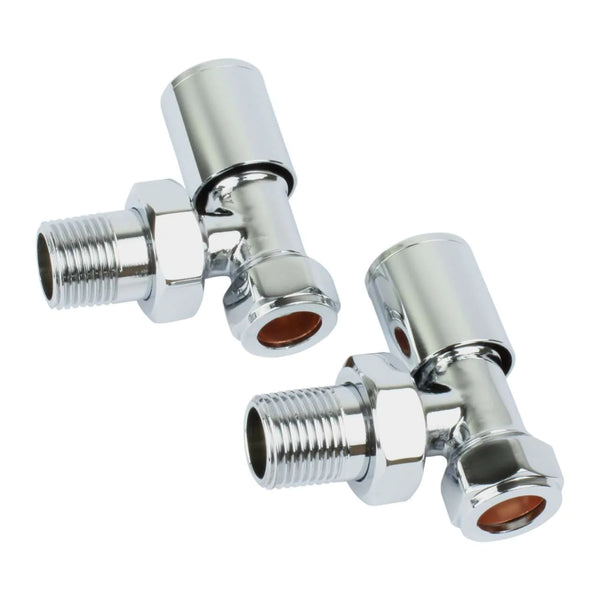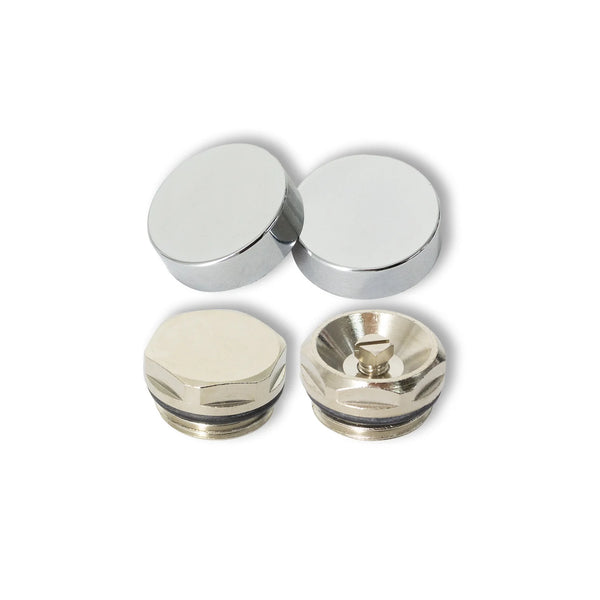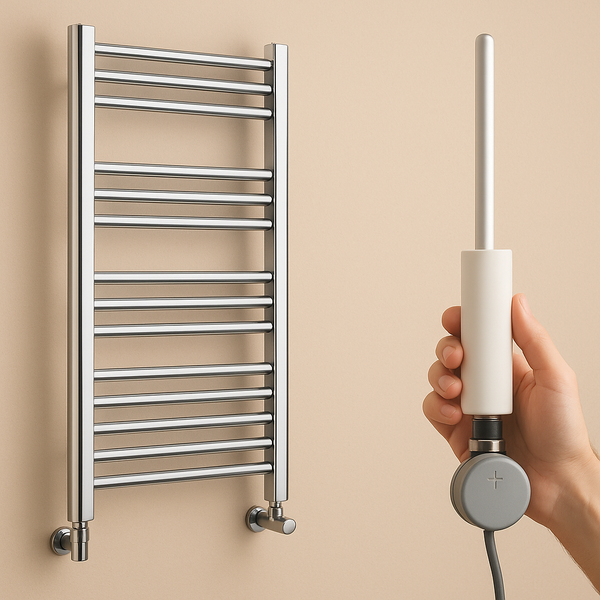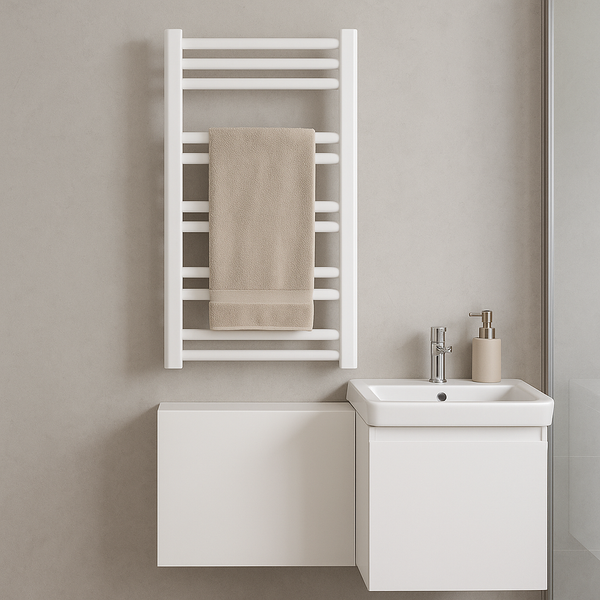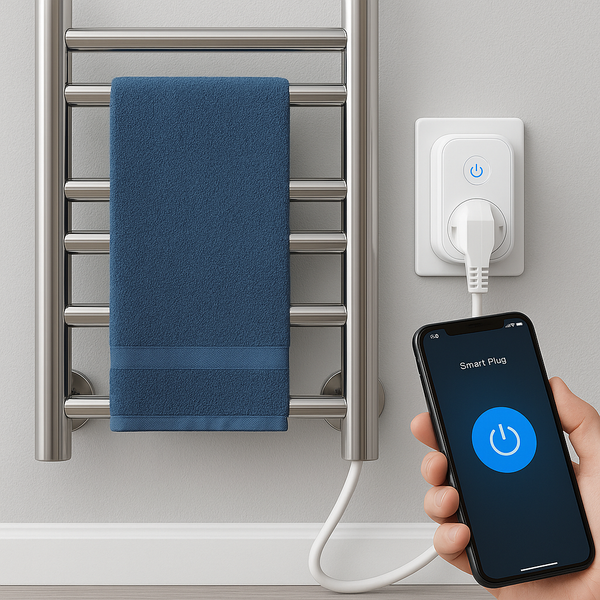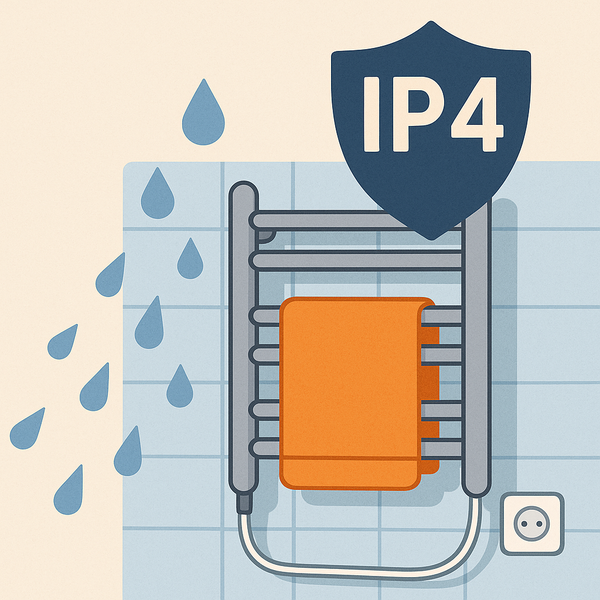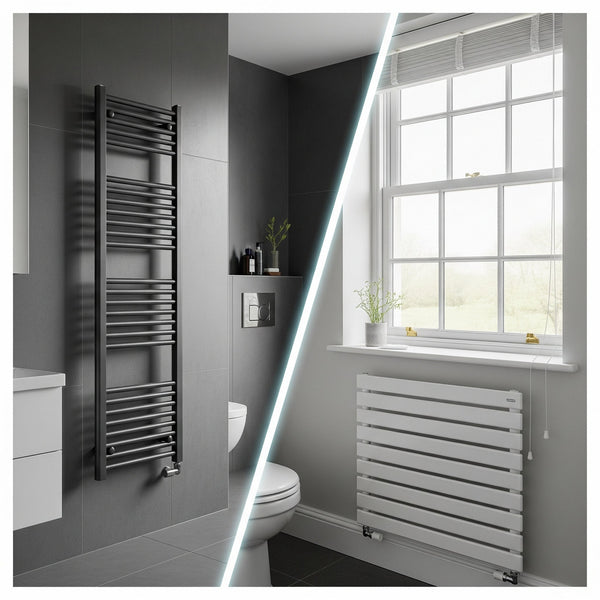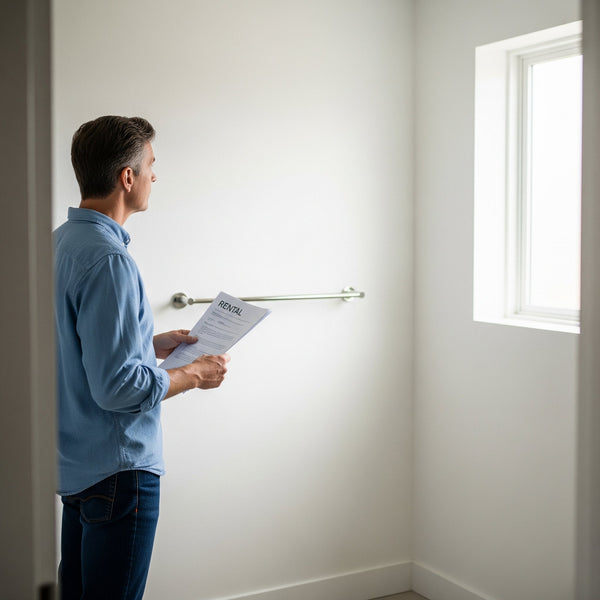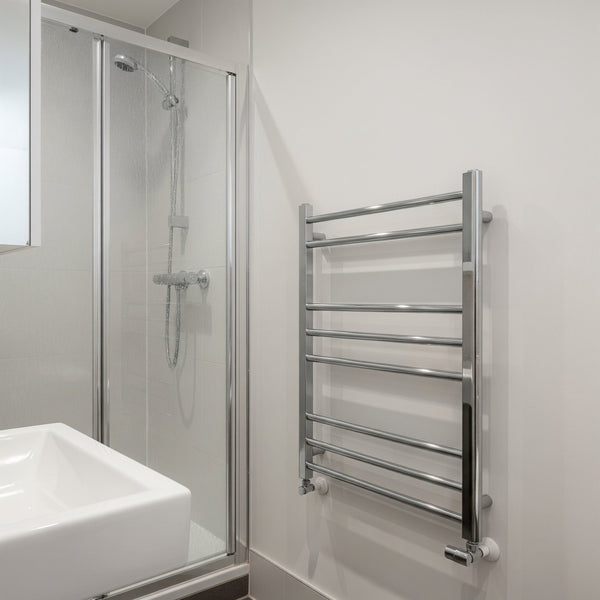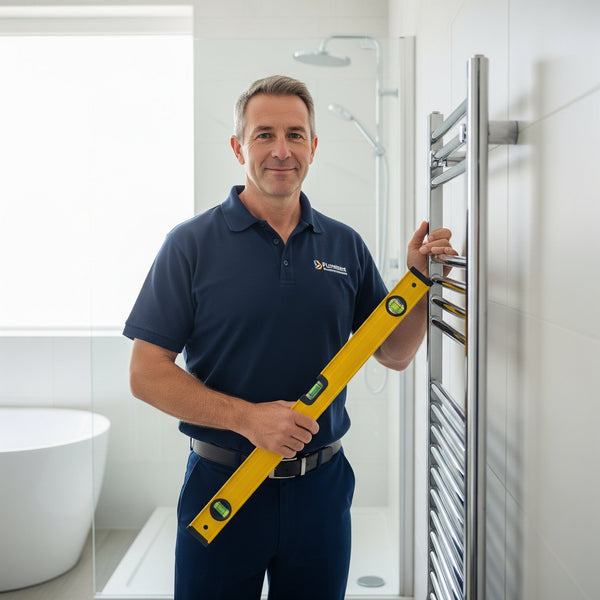A Renter's Bathroom Upgrade: Can You Install a Towel Rail Without Permission?
Living in a rental property often involves finding a balance between making the space feel like your own and respecting the fact that the property belongs to someone else. As a tenant, you might look at your bathroom and dream of simple upgrades that would make a world of difference to your daily comfort. High on that list for many is a heated towel rail. The thought of stepping out of the shower to a warm, dry towel, especially during a damp British winter, is incredibly appealing. It’s a small touch of luxury and a practical solution to combatting damp towels and a chilly room.

This leads to a very common question that renters ask: "Can I just install a heated towel rail myself? Do I really need to get permission?" In the excitement of improving your living space, it can be tempting to proceed with what seems like a minor alteration. However, when it comes to fixtures that connect to a property's plumbing or electrical systems, the answer is not so simple. Acting without permission can lead to serious consequences, including financial penalties and disputes with your landlord.
This comprehensive guide from Companyblue is written specifically for tenants. We'll explain the rules, outline the significant risks of unauthorised installation, and, most importantly, provide a clear, step by step strategy for successfully negotiating this desirable upgrade with your landlord. We'll also explore some fantastic, landlord friendly alternatives that can give you that touch of warmth without altering the property.
The Core Issue: Understanding Your Tenancy Agreement
Before you even think about buying a towel rail to install, your first port of call should be your tenancy agreement. This legally binding document is the rulebook for your tenancy. Almost every standard UK tenancy agreement, such as an Assured Shorthold Tenancy (AST), will contain a clause relating to alterations. This clause will typically state that the tenant must not make any alterations, additions, or changes to the property's fixtures, fittings, or decoration without obtaining the landlord's prior written consent.
Installing a standard heated towel rail is unequivocally an "alteration." It's not like hanging a picture frame. A central heating or dual fuel model requires cutting into and modifying the property's plumbing system. A hard wired electric model requires a connection to be made to the mains electrical circuit. These are not minor, reversible changes; they are significant modifications to the fundamental infrastructure of the building. Therefore, proceeding without explicit, written permission would almost certainly be a direct breach of your tenancy agreement.
The Serious Risks of Installing a Towel Rail Without Permission
Going ahead with an unauthorised installation might seem like a shortcut to comfort, but the potential fallout can be severe, stressful, and expensive. It’s crucial to understand what you stand to lose.
1. Loss of Your Security Deposit: This is the most likely financial penalty. When you move out, the landlord will conduct an inspection. If they discover an unauthorised towel rail, they are fully within their rights to use your security deposit to cover the cost of removing it and restoring the bathroom to its original condition. This could involve replastering, re tiling, and re painting the wall, costs which can easily exceed the value of the towel rail itself and consume your entire deposit.
2. Liability for Damages: What if the installation goes wrong? A small, slow leak from a poorly fitted plumbing joint can cause thousands of pounds worth of damage to floorboards, ceilings in the flat below, and lead to serious mould issues. If you installed the fixture without permission, any damage caused would be your direct responsibility. Your contents insurance is highly unlikely to cover damage caused by unauthorised DIY work, leaving you personally liable for the full, potentially catastrophic, cost of repairs.
3. Safety and Compliance Issues: Bathroom electrics are governed by extremely strict safety regulations in the UK. An incorrectly installed electric towel rail is a serious fire and electrocution hazard. If an accident were to happen, the legal and financial liability would fall squarely on you. Furthermore, a landlord could argue that by carrying out unregulated work, you have invalidated their property insurance, again making you liable for any resulting damages.
4. Risk of Eviction: While it may seem extreme, a significant breach of the tenancy agreement can be grounds for eviction. If a landlord discovers you have made major, unauthorised alterations to the core systems of their property, they could potentially seek to end your tenancy.
The Right Approach: How to Successfully Negotiate with Your Landlord
Just because you can't act unilaterally doesn't mean you can't get the upgrade you want. The key is to approach your landlord or letting agent professionally and frame your request as a mutual benefit. A happy tenant who is improving the property is an asset to a landlord.
Step 1: Do Your Research. Don't just ask for "a towel rail." Research a specific, suitable model. Choose a high quality, durable towel rail that would be a genuine asset to the property. Consider a simple, robust central heating model, as this is often the most appealing, low maintenance option for a landlord.
Step 2: Put it in Writing. A phone call can be forgotten or misremembered. Send a polite and professional email to your landlord or letting agent. Clearly and concisely state your request. For example: "Dear [Landlord's Name], I hope you are well. I am really enjoying living at [Property Address] and plan to stay for the long term. To improve the comfort and help manage damp in the bathroom, I would like to request permission to have a heated towel rail installed..."
Step 3: Frame it as a Win-Win. This is the most important part. Explain the benefits to them. Mention that a heated towel rail is a desirable feature that improves the property's value and appeal to future tenants. Highlight that it helps to effectively dry towels, reducing humidity and the risk of damp and mould, which protects their investment.
Step 4: Propose a Professional Solution. Reassure them that this is not a DIY job. State that you intend to use a qualified and insured plumber (and electrician, if applicable) for the installation. This shows you are responsible and prioritise the safety and integrity of their property. Offer to source quotes for them to review.
Step 5: Be Flexible on the Cost. You can propose a few options. You might offer to pay for the towel rail and the installation yourself, on the condition that it remains in the property when you leave. This is often a very attractive proposition for a landlord as they get a free property upgrade. Alternatively, you could suggest splitting the cost. In some cases, a landlord might be happy to pay for the entire upgrade themselves just to keep a good tenant happy and improve their asset.
Step 6: Get the Agreement in Writing. If the landlord agrees, ensure you get their permission in a clear, written format (email is fine). This is your proof that you were authorised to make the alteration, protecting your security deposit and clarifying the terms of the arrangement.
Landlord-Friendly Alternatives: The No-Permission-Needed Options
What if your landlord says no, or you don't want to go through the process of asking? You can still get the comfort of warm towels without making any permanent alterations.
The perfect solution is a freestanding electric heated towel rail. These portable units simply plug into a suitable existing socket (which must be located safely outside the main bathroom electrical zones). They require no plumbing, no wiring, and no drilling into walls. They are highly effective at warming and drying towels and can be positioned wherever you need them. When you move out, you simply unplug it and take it with you. It's an excellent, hassle free investment for any tenant.
FAQ: A Renter's Guide to Towel Rails
Here are our answers to the most common questions from tenants.
What if my tenancy agreement doesn't say anything about alterations?
Even if it's not explicitly stated, the law generally requires tenants to return the property in the same condition it was in at the start of the tenancy, allowing for fair wear and tear. Installing a permanent fixture is considered a significant change, not wear and tear. Therefore, you should always seek written permission to protect yourself and your deposit.
My landlord verbally agreed. Is that good enough?
It is not recommended. A verbal agreement is very difficult to prove in the event of a dispute later on, for example, if the landlord sells the property and the new owner queries the installation. Always follow up a phone call with a summary email, stating "Further to our conversation, I'm writing to confirm your permission for..." This creates a written record.
Can I install a "pre-filled" electric towel rail myself?
While a pre-filled electric rail doesn't require plumbing, it is still a fixed appliance that must be safely mounted and hard-wired into a fused spur by a qualified electrician to comply with UK bathroom safety regulations. It is not a DIY plug-in job and therefore still requires permission from the landlord.
Is a freestanding electric towel rail safe for a bathroom?
Yes, provided it is used correctly. It must be plugged into a socket that is located outside of the bathroom's designated electrical zones (specifically, outside Zone 2, which is 0.6m from the edge of the bath or shower). You should never use an extension cord to run one from a hallway into the bathroom. If you don't have a suitably located socket, this option is not safe to use.
I've already installed a towel rail without permission. What should I do?
The best course of action is to be upfront. Contact your landlord, explain what you have done and why, and reassure them that the work was completed to a professional standard (if you have certificates from tradespeople, provide them). You can then try to get retrospective permission in writing. Hiding it will likely lead to losing your deposit when you eventually move out.
